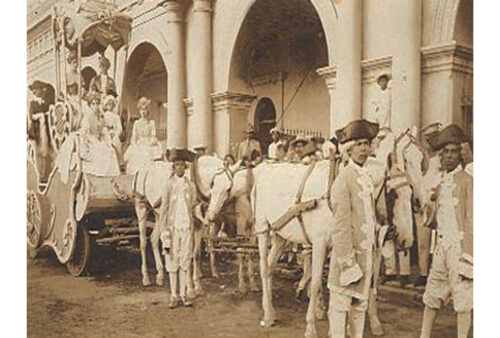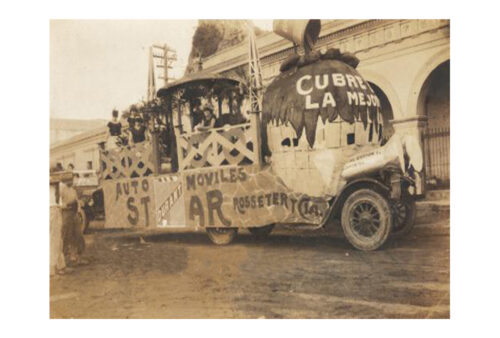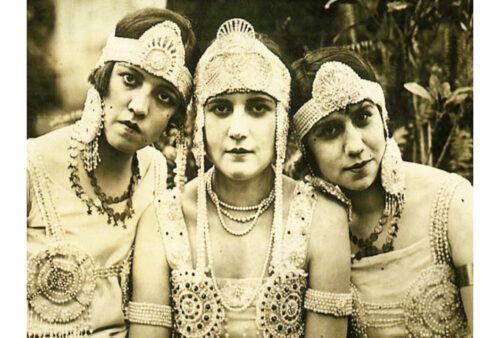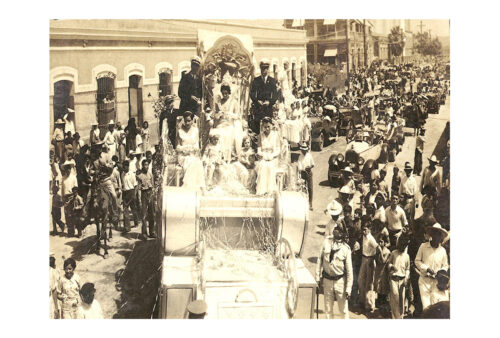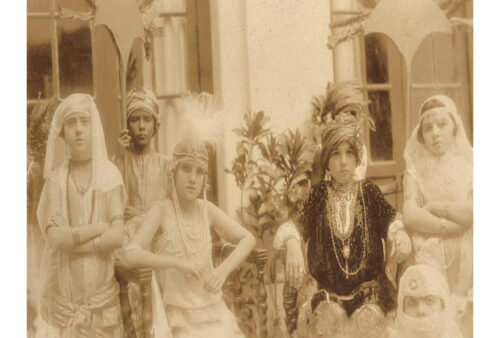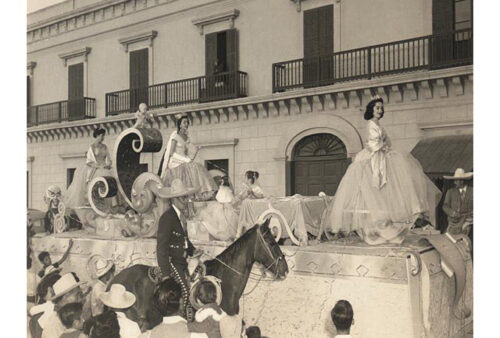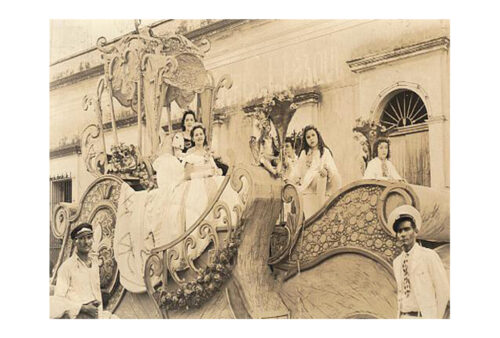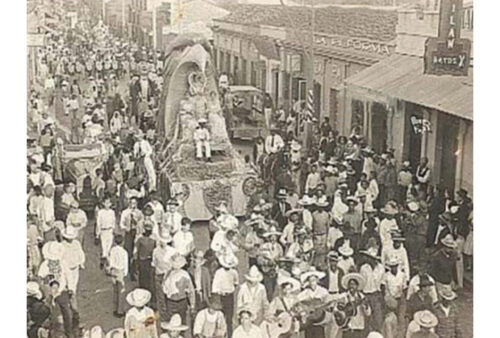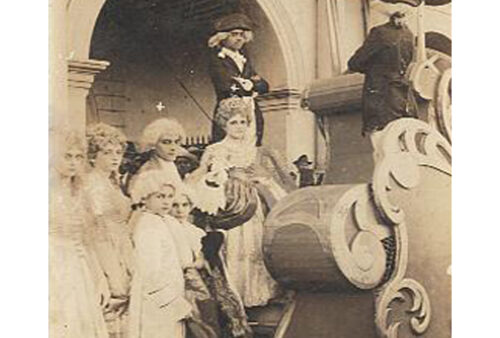Mazatlán´s International Carnival
During the five days leading up to Ash Wednesday each year, the people of Mazatlán celebrate their grandest festival. In 1998, Mazatlán's carnival marked a century of existence in its modern phase. Every year, during the carnival dates, Mazatlán transforms not only with the decorations on some of its streets but also with the evident joyful attitude of the population.
The Carnival of Mazatlán stands out from other carnivals in the country and the world because here, the fun is offered to the rhythm of the band.
The modifications it has undergone throughout history have not altered the original character of this popular celebration. Only the setting of the celebration changed due to space constraints as the city's population grew. Now, the main stage of the festival is composed of the Paseo de Olas Altas and Claussen, right by the sea. The coastal avenue in these sections is closed to vehicular traffic to create a parenthesis in daily life, a special season where some social rules become lax, and situations that are normally frowned upon are tolerated in an atmosphere of safety, resulting in peaceful celebrations. Every night between Friday and the Carnival on Tuesday, Olas Altas and Paseo Claussen - the best landscapes of Mazatlán, the favorite postcards - become a gigantic gathering and dance center by the Pacific Ocean. If the sound of the waves breaking is not heard on these nights, it's because of the decibels of the music and the hustle and bustle. One and a half kilometers of the avenue closed to traffic, streets and intersections interrupted with barriers.
Reigns and Coronations
Although some carnival activities usually take place from Thursday, the official celebration always starts on Friday and ends the following Tuesday, the eve of Ash Wednesday. However, the festive atmosphere begins to be felt in the city many days before. The campaigns of the candidates for the reigns (Carnival, Juegos Florales, Children's, and the "Ugly King" or "Rey Feo") help to prepare the carnival spirit, causing some demonstrations that, from time to time, roam the streets of the city making noise and commotion. Other important carnival events take place outside the "official" days of revelry: exhibitions where historical aspects of Carnival are disseminated, the Arts Evening, and the election of the Queen, for example.
Shortly before the carnival kickoff, the queen of the festival must be chosen. To select the woman representing the unusual festive monarchy, the people of Mazatlán have employed all sorts of methods, from the typical beauty pageant to the accumulation of economic votes, and even arbitrary individual designations. The candidate who wins second place in the competition is designated Queen of the Juegos Florales. This mechanism also involves young girls aspiring to the childhood reign and gentlemen aspiring to a place in the city's carnival history personifying the ugly Mazatlán men, with the euphemistically known title of "King of Joy."
To crown the carnival majesties, the city's baseball stadium transforms: a huge stage is set up in the middle of the "diamond," scenographies are designed for each of the coronations, towers and light crossbars, speakers and monitors, ramps and levels are installed. The cry of "Play Ball!" is replaced by the third call. Thus, two great passions of Mazatlán are combined: baseball and carnival.
Birth of the Modern Carnival Tradition in Mazatlán
In 1898, the carnival went from being a celebration spontaneously held by the inhabitants of the port to being a festival governed by a civil committee, a "Board," created for this purpose. This feature makes it the oldest carnival in the country organized in this way. On Tuesday, February 22, 1898, amidst the crowd gathered in the streets of Plazuela Machado, the first procession of decorated cars and bicycles in this history made its way. To introduce a farcical air to the celebration, Gerardo de la Vega was anointed king of madness, and a contest was held among the decorated vehicles that paraded. This was the first carnival organized by a committee. The "harina" game was coming to an end, and the modern tradition of confetti and streamers at Mazatlán's carnivals began.
The First Carnivals with Confetti and Serpentine
In the manner of the old Italian carnivals, where a king was elected on Corso Street to parody the ancient European monarchies, in Mazatlán in 1898, a false representative of royalty was also designated to preside over the novel way of celebrating carnival. At the head of the first carnival parade in the city's history, the first King became the center of general attention and the target of cascarón projectiles from those local revelers who still resisted abandoning the practice of the "Harina" Game.
The second king, "Tito Ahuja," had better luck as, thanks to his oratory skills and mischievous sense of humor, he gained the sympathy of the people of Mazatlán, defining the characteristics that future candidates for the reign of King Momo must have: to be a character of proven popularity, with a generous sense of humor and skills in oratory, as among their responsibilities was to rally the people from the nearest platform and invite them to join the celebration without prejudices or inhibitions.
El origen del carnaval en Mazatlán
In Mazatlán, carnival has been celebrated practically since the arrival of the first settlers to settle in this territory. Throughout the 19th century, the people of Mazatlán made the days before Lent an opportunity to put into practice the excesses prohibited the rest of the year. The behaviors considered sinful, those marked with the fiery index, came to light before taking refuge in the maelstrom of religious guilt. There was no authority that could stop the celebration, if they managed to minimize excesses through mounted police and obtained resources through the collection of disguise usage taxes.
On February 12, 1827, in Mazatlán, a "convite, mascarada, y comparsa" (banquet, masquerade, and parade) took place, in which the soldiers guarding the port participated. This celebration is the oldest documented event and attests to the ancient roots of carnival in this port. This event is documented in a report by the Commander of the Mazatlán Squadron, Captain Juan Antonio Muñoz. Ironically, it was an act of protest by "the troops to demand payment of their wages," which degenerated into revelry, according to the description that Commander Muñoz sent to the head of the treasury office.
According to ancient chronicles, on Carnival Tuesday, a crowd of forty or fifty masked Mazatlán locals, dressed in long tunics and adorned with a conical hat, on foot or riding bareback on donkeys, roamed the city streets causing a ruckus, telling jokes, improvising ironic songs, entering homes, and carrying out the most stupendous and noisy clowning at the expense of the neighbors. They left a trail of flour and dyes in their wake, smearing the landscape and the townsfolk who crossed their path. This was how the festival of madness came to an end.
The practice of the so-called "Harina" Games gained more vigor in the last decades of the 19th century. The games were held in public places or private "tertulias." In costume parties, "celebrations" were brought out, cascarones filled with confetti or flour and coloring substances. It seems that not even the threats of epidemics stopped their realization, much less the prohibitions of the authorities. When, by order of the city council, they could not be held in social centers or on the streets, the celebrations were organized in homes. By then, the original crowd had split: to have fun, the common people of Mazatlán formed two factions: those of "Abasto" and those of "Muey." The city was divided into two large factions. The "Abasto" group controlled from Faro Street (now March 21) to Tiradores Street (now Zaragoza); the "Muey" group's territory went from Faro Street to Playa Sur. Masked, in wagons and covered carriages with bright-colored flags, the contending factions ventured into opposing neighborhoods where singular battles with cascarones filled with flour as projectiles took place.


